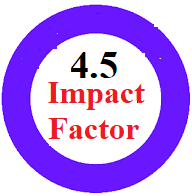REINFORCEMENT LEARNING IN IOT-DRIVEN HEALTHCARE: OPPORTUNITIES, CHALLENGES, AND FUTURE DIRECTIONS
Keywords:
Reinforcement Learning, Internet of Things, Smart Healthcare, Deep Reinforcement Learning, Remote Patient Monitoring, Personalized Healthcare, Healthcare Optimization, Data Privacy and SecurityAbstract
Reinforcement Learning (RL), a robust approach of machine learning, is increasingly impacting healthcare through intelligent decision-making systems that are capable of learning and adapting. Unlike the static heuristic algorithms, which are based on predefined rules, the RL algorithms adapt their decision making based on the constant interactions with the rich data environment, and update their decisions according to the feedback received. In medical environments, where patient states evolve over time and treatment efficacies are not immediately observable, RL provides a powerful remedy.
This work offers an extensive review of different healthcare applications such as real-time monitoring, critical care management, drug dosage tuning, personalized treatment and many others, where RL has been successfully used. Based on 27 validated and published studies, it investigates how RL algorithms have been employed to enhance clinical outcomes, and automate complex medical decisions. In addition, the review highlights a number of challenges including interpretability, ethical considerations, and connection to traditional healthcare systems. Towards explaining away from RL, we elaborate on challenges from explainable RL and human-in-the-loop learning to close the gap of algorithmic intelligence with clinical applications.
















